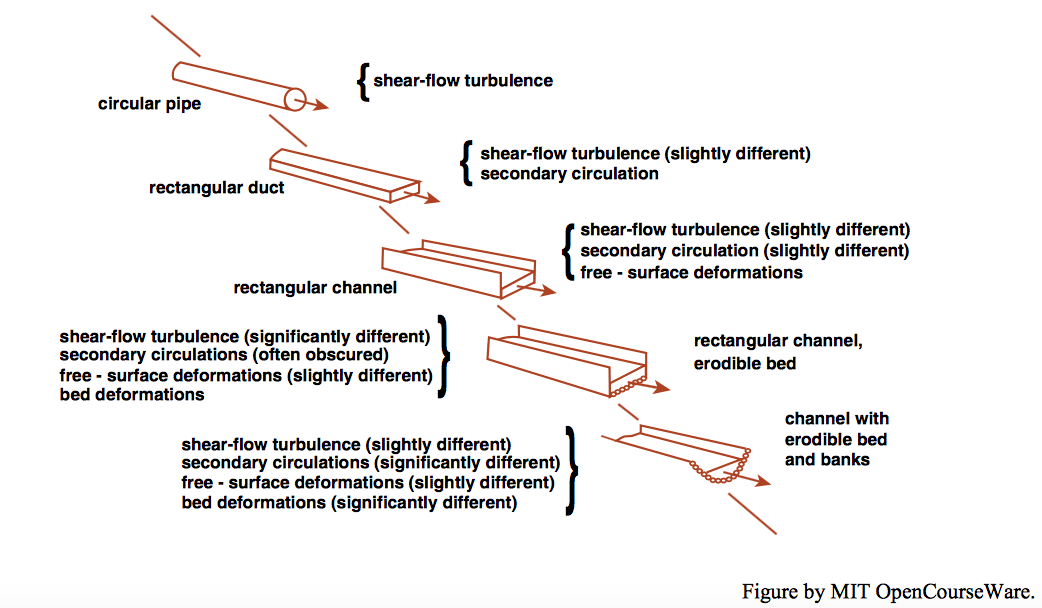8.2: Hydrodynamic Perspective
- Page ID
- 4199
The dynamics of sediment transport could be viewed as part of the field of two-phase flows: flows of a fluid that contains within it discrete particles of some solid or even of some other immiscible fluid. Accordingly, there are liquid flows with solid particles, liquid flows with liquid particles (drops), liquid flows with gas particles (bubbles), gas flows with solid particles, and gas flows with liquid drops. (The nature of gases precludes the existence of gas flows with gas bubbles!) The included phase may be either more dense or less dense than the including phase.
Turbulent sediment-transporting flows are far more important than laminar sediment-transporting flows, although some laminar flows do transport sediment. Turbulent sediment-transporting flows represent one of the most difficult problems in all of fluid mechanics, partly because the presence of the included phase alters the turbulence structure of the including phase, and partly because in many cases the flow boundary consists of the sediment particles themselves, and then the flow can shape its own boundary but is in turn affected by that shaped boundary. It is the feedback or mutual interaction between a sediment-moving flow and its deformable sediment boundary that lies at the heart of so many flows that move solid particles.
Figure \(\PageIndex{1}\) may be useful in giving you some perspective on the complexity of sediment-transporting flows. Figure \(\PageIndex{1}\) shows the changes in the essential nature of the flow, starting with turbulent flow in a closed conduit and ending up in sediment-transporting flow over a loose sediment bed. The step from a circular pipe to a rectangular duct adds the presence of a weak but non- negligible secondary circulation, while the structure of the shear-flow turbulence is not greatly different. In the next step, to an open rectangular channel, the turbulence structure is again only slightly different, as are the secondary circulations, but the deformable free surface makes for rather different effects in unsteady flows, as you have seen in Chapter 5. The next step, to a rectangular channel with a loose sediment bed, is the big one: because the flow can mold the bed, and the bed in turn has a strong effect on the flow, the turbulence structure and the free-surface geometry are significantly different in certain ranges of flow. The last step, to a channel with erodible banks, makes for greatly different bed geometry, at least in certain ranges of flow.



